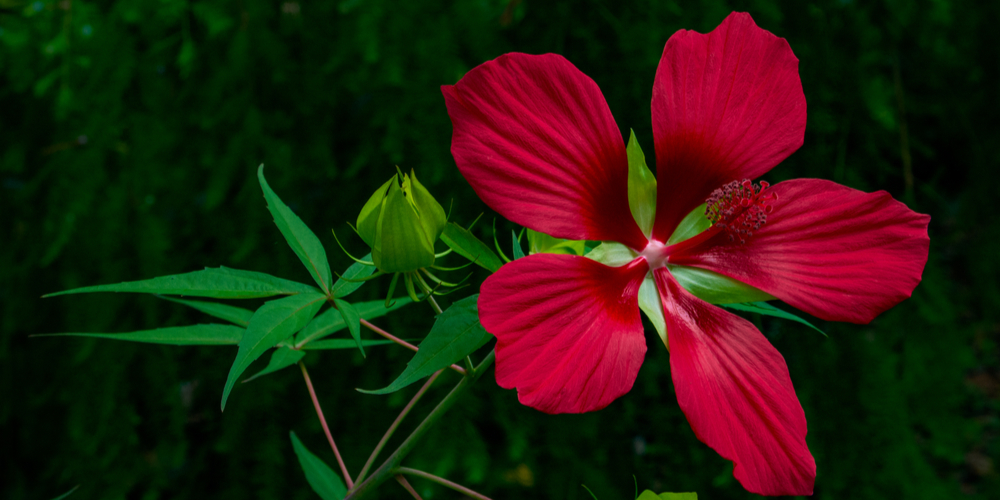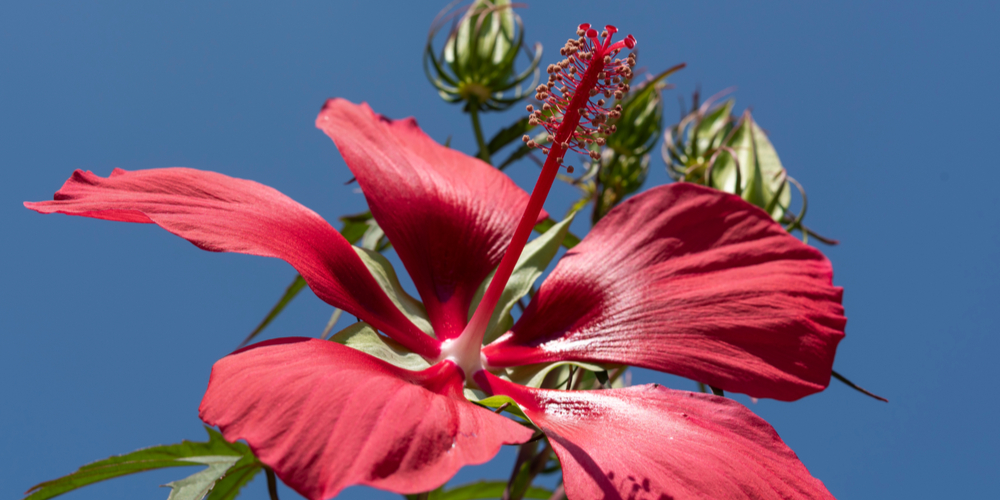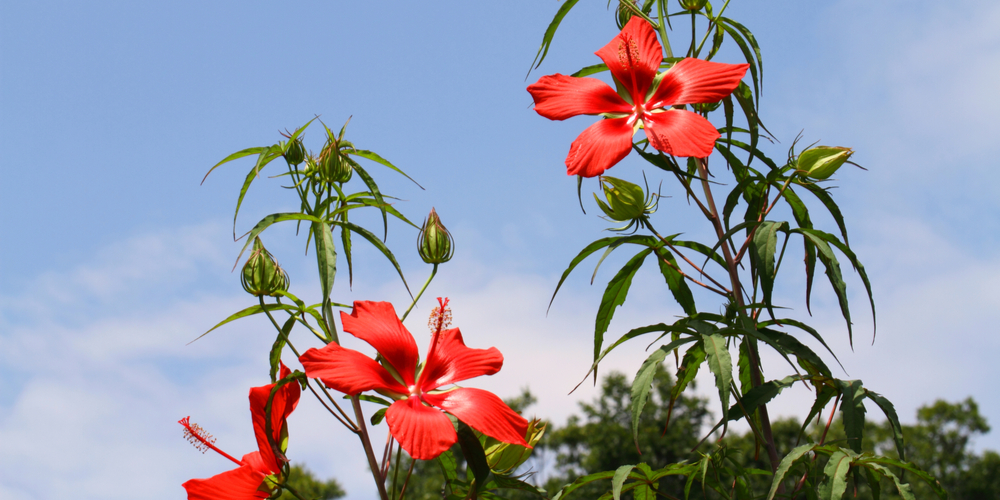Hibiscus coccineus, also known as Texas star hibiscus or scarlet hibiscus, is a hardy Hibiscus plant found in marshes, swamps, and ditches in the Southeastern United States. The Texas star hibiscus is not naturally found in Texas despite its name. The slender-looking plant blooms bright pointed five-petal scarlet flowers that attract hummingbirds and butterflies.
This makes the herbaceous perennial plant an excellent option to breathe new life into your garden. Texas star hibiscus happens to be a low-maintenance plant making it ideal for newbie gardeners. In this piece, we will discuss how to grow and take proper care of the Texas star hibiscus.
Texas Star Hibiscus Growth and Care

Growing the scarlet hibiscus in your garden isn’t that challenging. Below are the optimal growing conditions that you can create yourself:
1. The Proper Location
The most important step in growing the Texas star hibiscus is finding the right location to plant it. It is recommendable to choose a spot in your garden with moist, well-drained soil free of debris. The scarlet hibiscus can thrive in constantly wet soil.
2. Sunlight
Sufficient sunlight is a no-brainer. You need to plant the scarlet hibiscus in a location that receives at least six hours of sunlight every day.
3. Soil and PH
Although the Texas star hibiscus thrives in swampy locations, it can grow in most soil types. However, you must ensure that you water your plant regularly to keep the soil moist. If you want a healthy plant, you should also measure the soil PH. The ideal PH levels for growing this plant are mildly acidic to acidic.
4. Temperature
The scarlet hibiscus is a hardy plant as far as temperature goes. It can grow in full sunlight or partial shade. However, the plant begins dying during the winter months and goes dormant in freezing temperatures.
5. Timing
The best time to plant the scarlet hibiscus is spring. The plant flourishes and thrives throughout spring and summer before becoming dormant as temperatures fall.
How to Grow the Texas Star Hibiscus
1. You want to prepare the soil after selecting the perfect spot. Moisten the soil and ensure the PH level is mildly acidic to acidic.
2. You have the option of utilizing garden soil sold in your local stores. Mix this soil with your garden soil and moist the mixture to create the best soil conditions for your plant. Alternatively, you can mix in a layer of natural compost.
3. You can get the Texas star hibiscus as seeds or stem cuttings. If you use a stem cutting, dig a hole as deep and twice as wide as the root system of the cutting. Alternatively, you can plant the cutting in an appropriately sized container and then transplant it once it starts producing new leaves.
4. If you use seeds, start by growing the seeds thinly (about a quarter-inch deep) in a starter tray using standard potting soil. Water the seeds but take care not to suffocate them, then press down the soil lightly.
5. When the seeds start sprouting several leaves, you can transplant them to your garden. When growing several scarlet hibiscus plants in your garden, spacing is important to avoid overcrowding. It is ideal to space your plants about 3 or 4 feet apart.
6. Newly gown hibiscus requires watering every few days during the first couple weeks after you plant them. You should also use fertilizer in the spring and summer months. Mix the fertilizer in with the soil about an inch deep.
Caring for Your Scarlet Hibiscus Plant
Proper care is essential if you want a healthy Texas star hibiscus plant. Below are the steps necessary for optimal care:
Watering
The scarlet hibiscus loves moisture, so it’s nearly impossible to overwater it. You may water your plant once every week to keep the soil moist at the plant root areas. Your plant may need more water during the dry seasons.
Fertilizing
Fertilizing your plant is vital to proper growth. Fertilize your plant once a month when it’s actively growing in the spring and summer months.
Pruning
Pruning helps keep your plants in proper shape. You can prune the flowers when they fade during autumn to encourage blooming.
Diseases and Pests
It’s essential to check if your plants have been infected by disease and pests, especially Aphids, thrips, whiteflies, scale, and mealybugs. Check the undersides of the leaves regularly. If they are infested with aphids, you can utilize an insecticide safe for hibiscus plants.
Texas Star Hibiscus Growth and Care: Conclusion
As you can see, growing, cultivating, and caring for the Texas star hibiscus is not that challenging. Hibiscus coccineus is low-maintenance and blooms beautiful bright scarlet flowers that will dramatically improve your garden or indoor spaces when potted. If you aren’t sure about your green hand, follow this guide and try out this plant.
You may also like: Hibiscus tiliaceus variegata growth and care

